GROOMING A PUMI
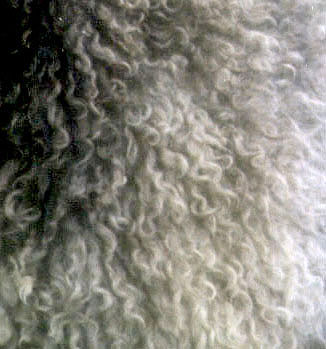 The ideal Pumi coat is elegant, neither too long nor too short, suitably thick,
curly, and it is made up of very nice «locks of hair«. The coat can be maintained quite easily
by combing (not brushing) the coat every week or two. After being combed, the Pumi must be bathed or
«wetted down» and left to dry on its own. Never brush and blow dry the hair which takes away the curly
locks of hair that is a Pumi characteristic. You may use a hair dryer, but do not brush at the same time,
and blow gently. The best way to see what the Pumi hair should look like is to take your dog swimming
for five days in a row and each time let him dry naturally. Then his hair will take on the correct characteristics.
The ideal Pumi coat is elegant, neither too long nor too short, suitably thick,
curly, and it is made up of very nice «locks of hair«. The coat can be maintained quite easily
by combing (not brushing) the coat every week or two. After being combed, the Pumi must be bathed or
«wetted down» and left to dry on its own. Never brush and blow dry the hair which takes away the curly
locks of hair that is a Pumi characteristic. You may use a hair dryer, but do not brush at the same time,
and blow gently. The best way to see what the Pumi hair should look like is to take your dog swimming
for five days in a row and each time let him dry naturally. Then his hair will take on the correct characteristics.
The Pumi does not shed, but must be trimmed and/or plucked every 2—4 months to keep him looking tidy.
The correct look of the Pumi should govern how he is trimmed, so let's take a brief look at the standard of perfection for the Pumi. The Pumi is a square dog — he should be the same length from his withers to the ground as he is from the forechest to the buttocks. The sides of the body are rather flat (not rounded or barrel-shaped). The withers are clearly noticeable, the back line slopes slightly. He has a high-set tail curled over the back, a relatively narrow, wedge-shaped head with very little stop, and high-set, semi-erect ears, with about 1/3 of them folding over. His legs should be straight when viewed from the front or rear, with moderately angulated shoulders and rear.
OK, now how does that translate to grooming?
The order of grooming is comb, pluck, scissor, bathe, and let dry (or blow dry GENTLY).
In fact we've found that for the best effect, only pat them dry with a towel, do not rough up the hair with the towel. In the middle of winter you'll probably want to gently blow them dry to keep them from getting chilled.
First, comb him out until he's fluffy. Then before you start trimming your dog, remember this — when bathed and the hair is curly, it will look shorter than it does now! Be sure to leave a little more hair than you think looks good because it will get shorter when bathed and curled.
The body hair is shortened first by plucking. In other words, where the hair is too long, pull out the long hairs with your fingers (rubber finger tips will help) until only the shorter hairs are left. It comes out quite easily, and the hairs that grow in will be a little coarser and easier to take care of in the future. Some breeders do not pluck, but only scissor their dogs, but we find that the hair is easier to maintain and has a better quality when at least some plucking is done. After plucking the body, use scissors and trim the head, neck, buttocks, forechest, and legs, according to the diagram.

The dark areas on the diagram illustrate where the coat is at its shortest (about 1—3 cm or 1/2 — 1 — 1/4 inches ), the white areas represent those areas where the coat is at its longest (7 cm, 2-3/4 inches maximum), in the grey areas the coat is somewhere in between. The length of coat is measured when the coat is curled up, so the actual length of the hairs is longer than these measurements. The final length of the coat depends on the structure of the Pumi: the coat of a strong-bodied Pumi should be kept shorter, while a light-bodied Pumi can have longer hair, etc. There shouldn’t be any clear edges in the coat — everything should be rounded.
The front (forechest) and back (buttocks) of the Pumi are trimmed shorter to preserve the correct, square look. Be careful with the backline so that it doesn’t look arched, sway-backed or slant the wrong direction.
On the head you should pay attention that the skull and the cheeks don’t look too massive in comparison with the muzzle, so the cheeks should be cut fairly short. The profile of the head should be straight (no stop). The hair on the ears is rounded and trimmed. If the ears are heavy, you should cut more hair off and vice versa. It is good to cut more hair on the outside edges of the ears so that they look as well set as possible. If your Pumi's ears fold over too far, cut as much hair as possible off the ears so there is less weight holding them down. Also you can trim the hair on the top of the head shorter to make the ears appear higher. The opposite is also true, if the ears stand too far up, leave more hair on the ears to hold them down. Pull out the hair that grows inside the ear canal (our Pumis hate this, but it's better for their ear health).

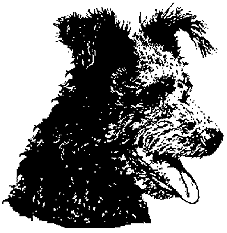
The hair on the tail is trimmed (1) and shortened so that the hair doesn’t «part» clearly. You should be able to see daylight (2) through the inside of the curl in the tail.
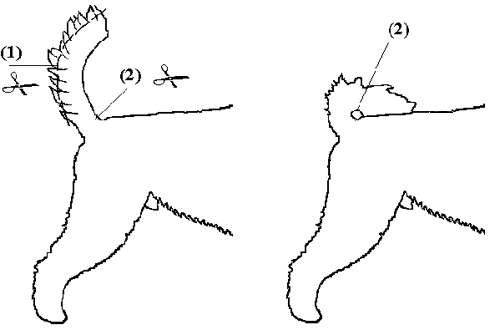
The hair on the legs usually doesn't need to be trimmed very much, but make sure the legs look straight and that the hair on the feet is rounded. Also be sure to cut and trim the nails.
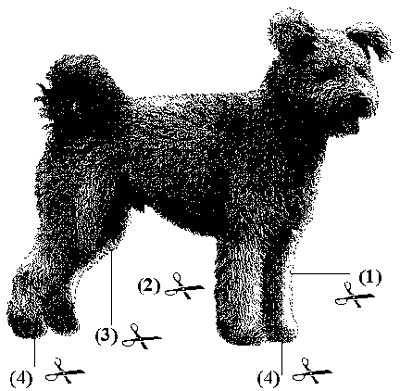

After all the trimming, you must bathe your Pumi.
Bathing with shampoo will soften the coat for a week or two, but the firmness will come back. When finished bathing, pat your dog dry with a towel and let him air dry on his own. After he's dry, you may want to touch up a few areas with either regular scissors or thinning shears.
Before a Dog Show
We usually don't pull the hair before showing, or we do it only very carefully. Otherwise we usually prepare the coat of our dogs one or two weeks before the show and then we let it take up a natural form. That's also the time when we bathe them with shampoo. The day before the show we just bathe them with clear tap water under the shower and let them dry.
BRUSHES
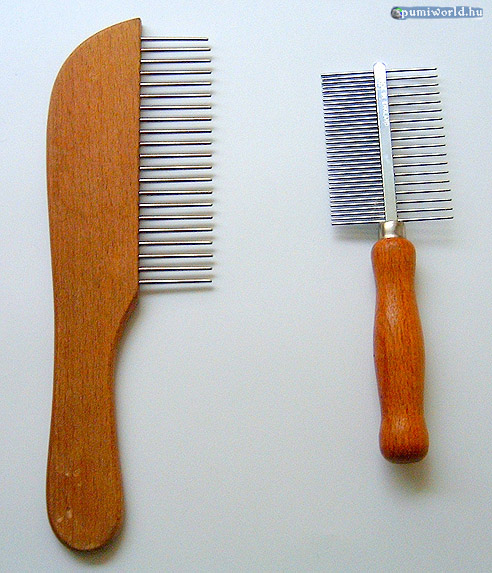
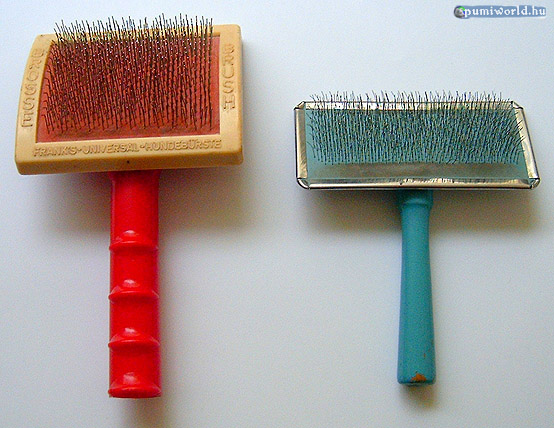
SCISSORS
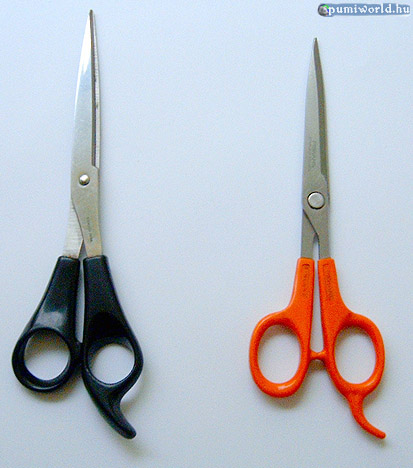
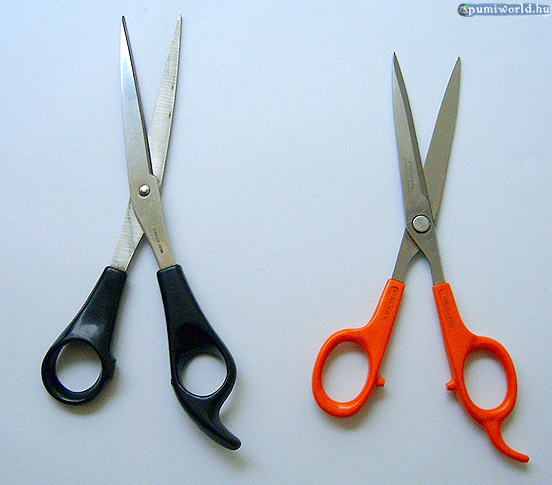
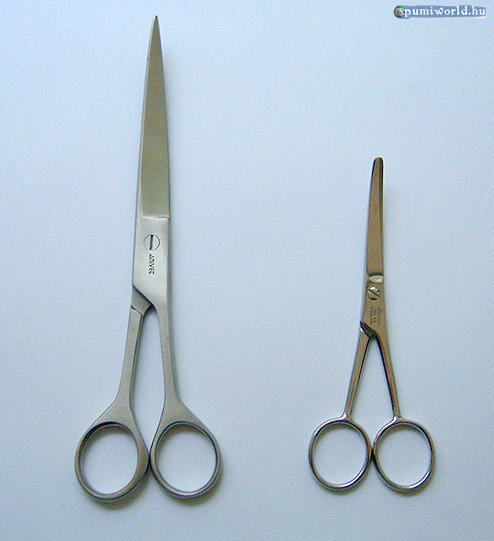
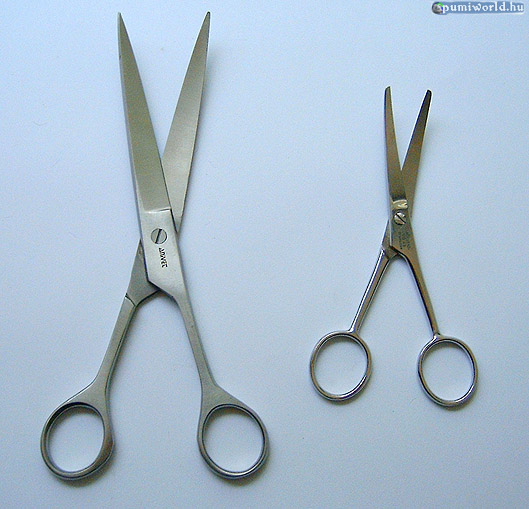
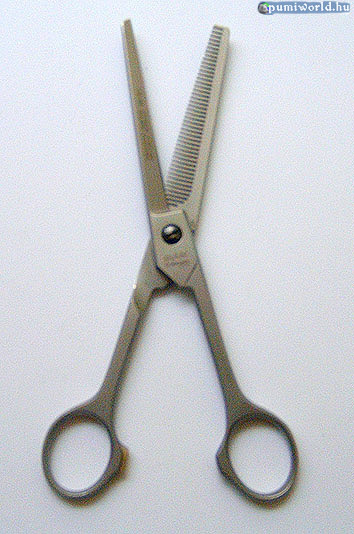
© In English written by Chris Levy, Abiqua kennels, USA